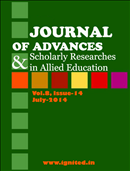Amitav Ghosh’S the Shadow Lines
Exploring Amitav Ghosh's narrative craftsmanship and cartographic critique
Keywords:
Amitav Ghosh, The Shadow Lines, craft, concerns, diegetic elements, narrative trigger, mnemonic enterprise, narrative management, narratological technique, cartographic determinations, Bengal, vivisection, secular tolerance, alternative cartography, multi-cultural scenarioAbstract
In this essay I examine Amitav Ghosh’s craft and concerns in one of hisfinest novels, The Shadow Lines (1988).I further explore Ghosh’s organization of the diegetic elements, such as thenovel’s world and situation, events and characters, as well as the mode oftelling and recounting the story, and argue how it is designed in conjunctionwith his central thematic preoccupation. As memory provides the narrativetrigger in this novel, I analyses Ghosh’s mnemonic enterprise as part of hisnarrative management. By using different narrative terms derived from RussianFormalism and Structuralism mediations, the novel’s construction is taken apartto demonstrate Ghosh’s innovative art. Besides dealing with the novel’snarratological technique, this essay looks at Ghosh’s interrogation ofcartographic determinations against the background of Bengal’s vivisection into East Pakistan (now Bangladesh) and West Bengal and evaluates his espousal of seculartolerance and alternative cartography in a multi-cultural scenario.Published
2014-07-01
How to Cite
[1]
“Amitav Ghosh’S the Shadow Lines: Exploring Amitav Ghosh’s narrative craftsmanship and cartographic critique”, JASRAE, vol. 8, no. 15, pp. 0–0, Jul. 2014, Accessed: Nov. 29, 2025. [Online]. Available: https://ignited.in/index.php/jasrae/article/view/5332
Issue
Section
Articles
How to Cite
[1]
“Amitav Ghosh’S the Shadow Lines: Exploring Amitav Ghosh’s narrative craftsmanship and cartographic critique”, JASRAE, vol. 8, no. 15, pp. 0–0, Jul. 2014, Accessed: Nov. 29, 2025. [Online]. Available: https://ignited.in/index.php/jasrae/article/view/5332











